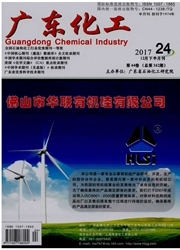

 中文摘要:
中文摘要:
在序批式活性污泥反应器(SBR)内,以模拟的广州城市污水为处理对象,研究污泥龄和pH对同步硝化反硝化(SND)的影响.试验结果表明:适宜的污泥龄是产生SND脱氮的关键,最佳污泥龄为17~25天,平均总氮去除率可达80%以上;污泥龄低于12天,硝化反应难以有效进行;污泥龄高于50天,反应器内由于溶解氧浓度不足导致处理效果恶化.进水pH的大小影响反应结束后系统内的DO浓度,进而影响SND的脱氮效果.在试验范围内,随着进水pH的升高,出水总氮去除率亦相应提高,当进水pH控制在7.5~8.0之间,总氮去除率可达92%.
 英文摘要:
英文摘要:
The effects of sludge age and pH value on simultaneous nitrification and denitrification (SND)process were investigated in a sequence batch reactor (SBR) with synthetic Guangzhou municipal wastewater. The results showed that: Appropriate sludge age is the most important factor to SND, the best age of sludge is 17-25 days, the average removal rate of total nitrogen reaches above 80 % under this condition. The nitrification reaction works inefficiently when the sludge age lower than 12 days; if the sludge age is more than 50 days, the system works bad because of insufficient dissolved oxygen. The pH in the influent has effect on the DO concentration in the effluent, thereby having effect on SND. With higher the pH value in the influent in the lab, the better total nitrogen removal rate can be obtained in the effluent. When the influent pH was controlled between 7.5-8.0, the total nitrogen removal rate is up to 92 %.
 同期刊论文项目
同期刊论文项目
 同项目期刊论文
同项目期刊论文
 Start-Up of Denitrifying Dephosphatation with Nitrite as Electron Acceptor and Microbial Community A
Start-Up of Denitrifying Dephosphatation with Nitrite as Electron Acceptor and Microbial Community A Analysis and succession of nitrifying bacteria community structure in sequencing biofilm batch react
Analysis and succession of nitrifying bacteria community structure in sequencing biofilm batch react 期刊信息
期刊信息
